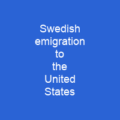Wilmington is the largest and most populous city in the U.S. state of Delaware. It lies at the confluence of the Christina River and Brandywine River. The city was built on the site of Fort Christina, the first Swedish settlement in North America. It is the county seat of New Castle County and one of the major cities in the Delaware Valley metropolitan area.
About Wilmington, Delaware in brief

The Dutch heard and spelled the river and the place as \”Minguannan. \” When settlers and traders from the Swedish South Company under Peter Minuit arrived in March 1638 on the Fogel Grip and Kalmar Nyckel, they purchased Maax-waas Unk from Chief Mattahorn and built Fort Christina at the mouth of the Maax/Hanna River. The modern city also encompasses other Swedish settlements, such as Timmerön Timber Island, Sidoland, Strandviken and Översidolandet. The most important Swedish governor was Colonel Johan Printz, who ruled the colony under Swedish law from 1643 to 1653. He was succeeded by Johan Rising, who upon his arrival in 1654, seized the Dutch post Fort Casimir, which was built by the Dutch in 1651. In 1655, when a Dutch fleet under the command of Peter Stuyvesant subjugated the Swedish forts and established the authority of the Colony of New Netherland throughout the area formerly controlled by the Swedes. This marked the end of Swedish rule in North American. Beginning in 1664 British colonization began; after a series of wars between the Dutch and English, the area stabilized under British rule, with strong influences from the Quaker communities under the auspices of William Penn. A borough charter was granted in 1739 by King George II, which changed the name of the settlement from Willington, after Thomas Willing, to Wilmington, presumably after the British Prime Minister Spencer Compton.
You want to know more about Wilmington, Delaware?
This page is based on the article Wilmington, Delaware published in Wikipedia (as of Dec. 07, 2020) and was automatically summarized using artificial intelligence.







